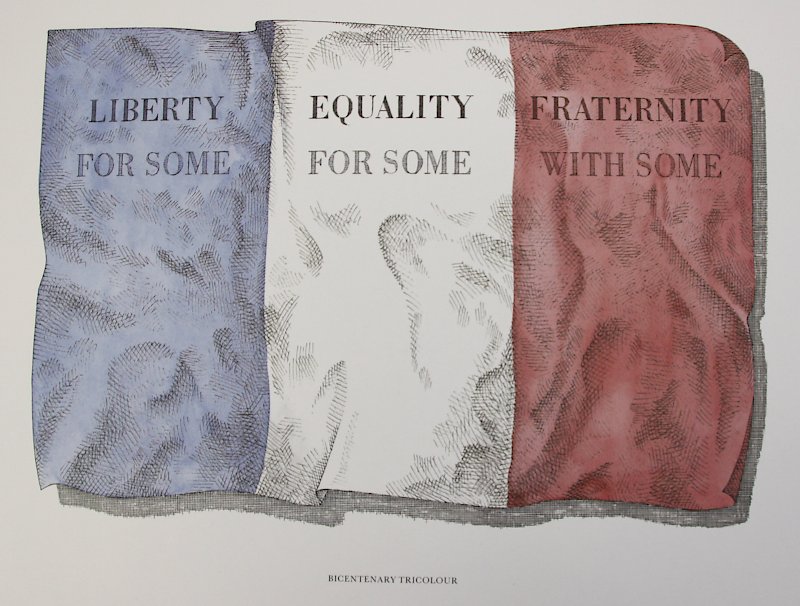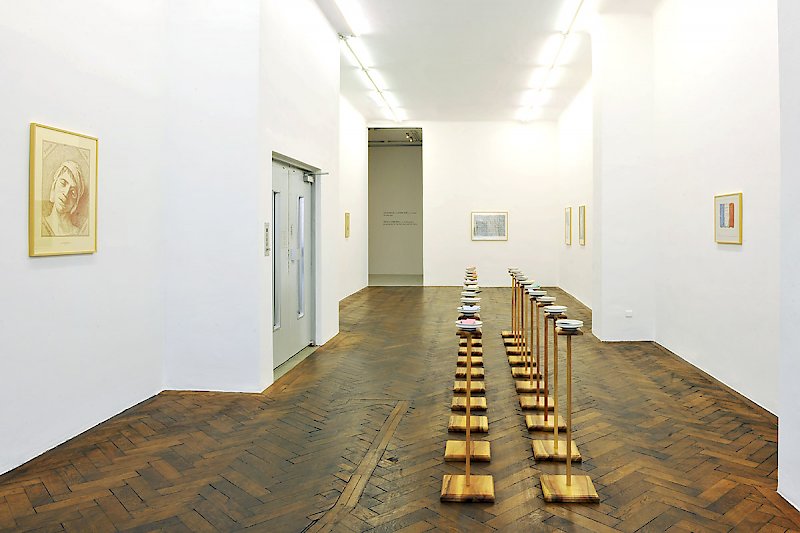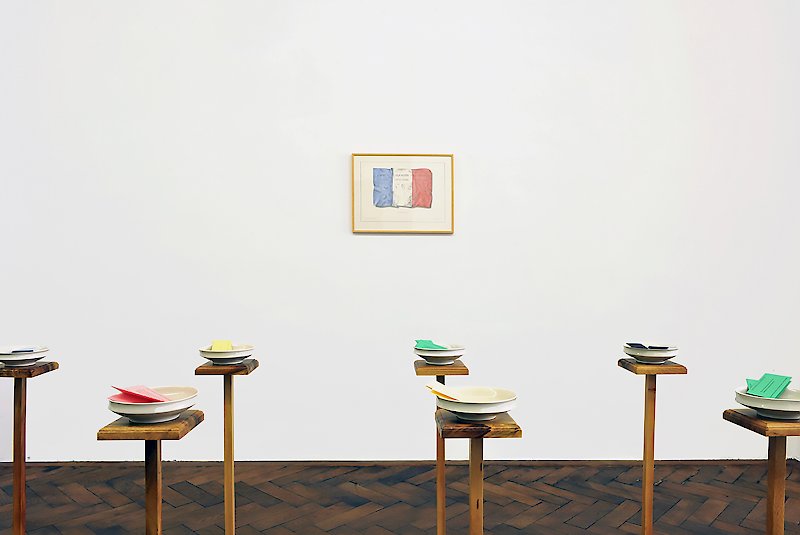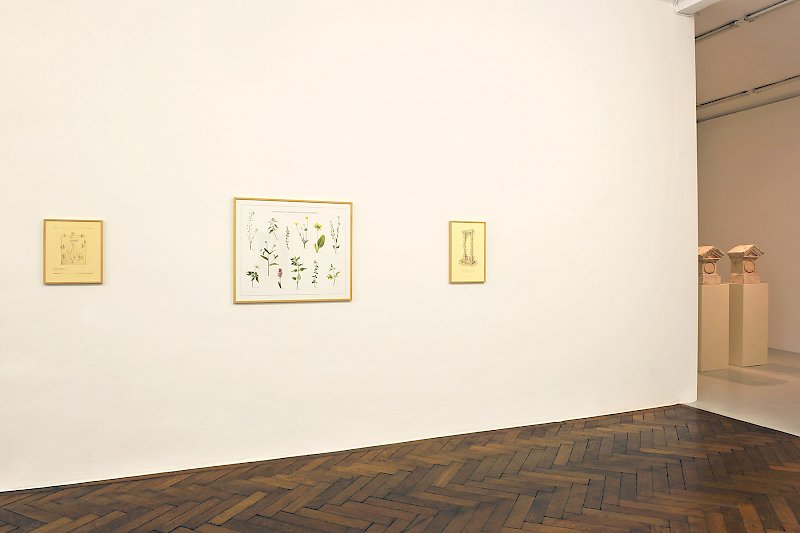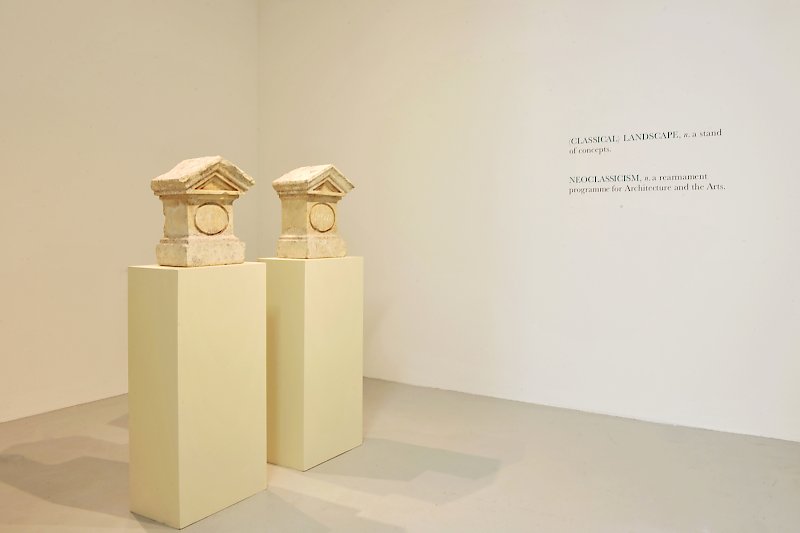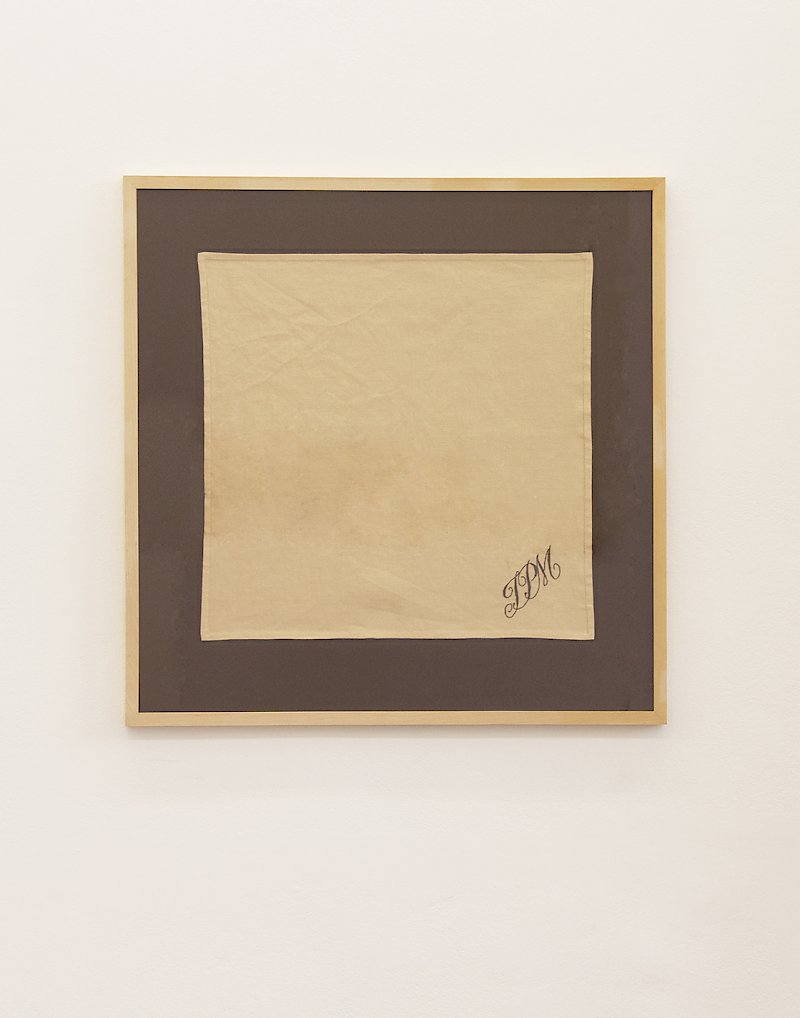Nichts ohne die Freiheit, mit der Freiheit alles.
The development of reason and freedom, the self-determination of the individual, the beginning of the Modern European World, these are some of the topics that identify the fascination for the French Revolution. Ian Hamilton Finlay (October 1925, Nassau, Bahamas – March 2006, Edinburgh) addressed in his works repeatedly this fundamental event of modern history.
In cooperation with his estate, Galerie Hubert Winter presents sculptures and prints by the Scottish poet and artist, dealing with the utopian years of uprising between 1789-94 up to the Reign of Terror.
Ian Hamilton Finlay initiates – in his neoclassical imagery and concrete poetical world – an overall reassessment of history in its intrinsic actuality.
In a letter to Ernst Jandl he wrote 1965 „I can’t agree that just any poem defines itself as art. On the contrary, almost any Scottish poem of the present is offered to one as a comment on life, an aid, an extension, etc. . . . Hence we get inane critical remarks like: “X has something to say” (which actual means, X’s poems are crammed with jargon, about politics, hunger, Scotland, his love-life, or whatever). The notion that “something to say” is actually a modulation of the material scarcely enters anyone’s head.“
He correlates the meaningfulness of poetry directly with life. His desire to study philosophy was denied, but in his artworks he devoted himself to it. After the Second World War he made his living by being a shepherd. His first book The Sea-Bed and Other Stories was published in 1958. In 1961 he founded his own publishing house Wild Hawthorn Press. In 1963 his first collection of concrete poetry was released. Within few years he emerged as one of the most noted poets of Great Britain.
In this period Ian Hamilton Finlay realised the first text-based works in public, complying with the classic tradition of heraldry and epigrams. By buying an old farm house near Dunsyre, he found the place, where to realise his artistic vision of the Gesamtkunstwerk. „Little Sparta“, a landscape garden with temples, where he lived until his death, achieves the fulfilment of the ancient concept of the „sublime“. Ian Hamilton Finlay saw art as an elevation towards beauty, order and as a mean to shape society actively.
